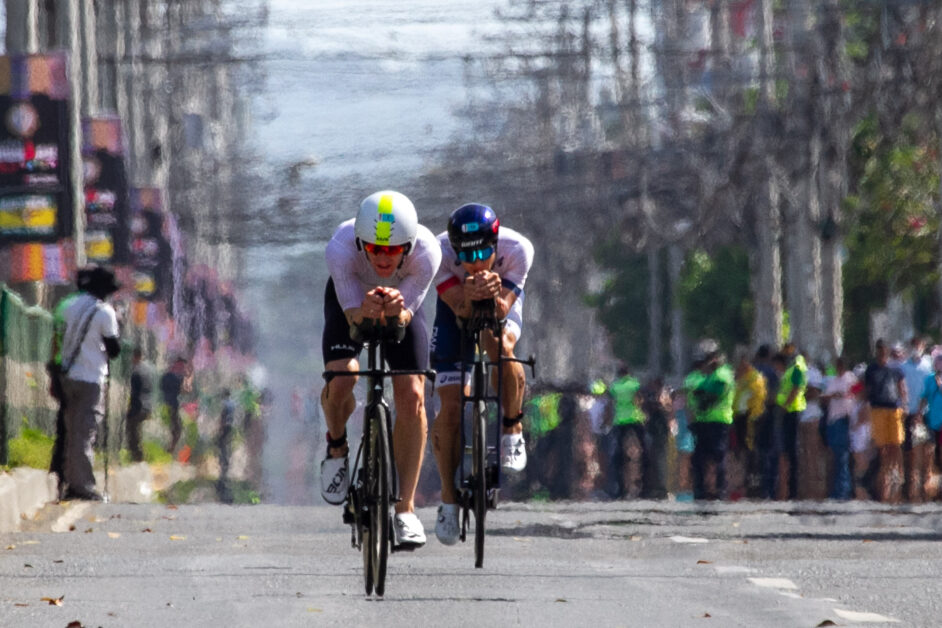
DAVAO CITY (MindaNews / 27 July) — Motorists and commuters in Davao City have raised complaints against the road closures early next month due to the IronMan 70.3 triathlon, which include closing lanes of the Coastal Road for a week.
The City Transport and Traffic Management Office (CTTMO) announced on Friday night that from August 5 to 8 (Monday to Thursday), the Davao City Coastal Road between the Davao-Cotabato Road (Bago Aplaya) and corner Talomo Road will be fully closed for 24 hours each day for the triathlon preparations.
During the triathlon on August 11 from 3:00 AM to 1:00 PM, the Coastal Road from corner Tulip-Ecoland Drive to Davao-Cotabato Road intersection in Bago Aplaya will be closed for 24 hours.
On the same day, the northbound portion of the Davao-Cotabato Road will be closed from the Davao-City Coastal Road intersection in Bago Aplaya to the Sta. Cruz-Davao City boundary, from 3:00 A.M. to 1:00 P.M.
However, the southbound portion going to Sta. Cruz will be used for two-way traffic.
Despite the early announcement of the CTTMO motorists are worried the closures might hamper traffic flow, especially during weekdays now that classes have opened.
Adam Moreno, a taxi driver, told MindaNews the four-day closure on weekdays will not only cause delays along McArthur Highway but also an “Edsa-like” congestion, referring to the main street in Metro Manila.
“Since its opening I have always used the Coastal Road. It takes just 10 minutes from Talomo to the city proper. Once the closure happens, I have to squeeze through, I’d be lucky if I can make it in 45 minutes,” he said in the vernacular.
Facebook user Katherine Roth also expressed dismay, questioning the purpose of the Coastal Road.
“You should not have opened the Coastal Road if you’d only make it an event venue on short notice or at every whim of organizer. I thought the purpose of the Coastal Road is to alleviate the horrendous traffic situation of Davao City? What have we got to do with this Ironman when what we need is to go to the school and workplace?” she commented on the city government’s post.
Conrado Baluran, chair of the transport and communications committee of the city council, sought the approval of an ordinance under suspended rules to implement these road closures as early as July 16.
CTTMO traffic engineering division in-charge Jorge Jumamoy suggested the same road closures, but he proposed a full closure from the Coastal Road intersection in Bago Aplaya to the Sta. Cruz-Davao City boundary.
Jumamoy suggested a lone alternate for those coming from Digos City or General Santos City using the Kidapawan-Arakan-Lumondao-Mintal route, for instance, who would wish to travel to Davao City during the scheduled road closures.
City Councilor Al Ryan Alejandre said the lone alternate route might greatly affect the Dabawenyos especially those having emergencies or flights to catch.
City Councilor Bernard Al-ag said it might need a broad information dissemination to Davao City’s neighboring local government units.
Hearing these, Baluran also suggested refining the re-routing scheme, but the city council approved later that afternoon Ordinance Number 0575-24 on the temporary road closures for the triathlon.
On Tuesday, July 23, the city council also approved Baluran’s resolution to amend this ordinance to ensure that two lanes on the southbound road to Sta. Cruz will be open.
“In fact during the closures of road in IronMan, we have some personnel to man the traffic especially from Bago Aplaya to the city proper,” Abude said during the city council session on Tuesday.
“For other road concerns, we can raise them to the office of the city administrator so that we can apply those to future races, if there is,” he added.
The National Economic Development Authority (NEDA) – Region XI defined the currently 8.019-kilometer road as a bypass road/alternative route to the Davao-Cotabato Road and ABS-CBN Diversion Road to ease traffic congestion along busy intersections such as Matina Junction., Bangkal Junction, Ulas Junction and Central Business District in the area.
“This is to disperse urbanization outside Davao City Urban Center, which is already over-saturated because large-scale shopping malls are concentrated and international port/airport and bus terminals are located within the urban center,” NEDA-11 said in its Davao Regional Development Report. (Ian Carl Espinosa/MindaNews)
0 Comments